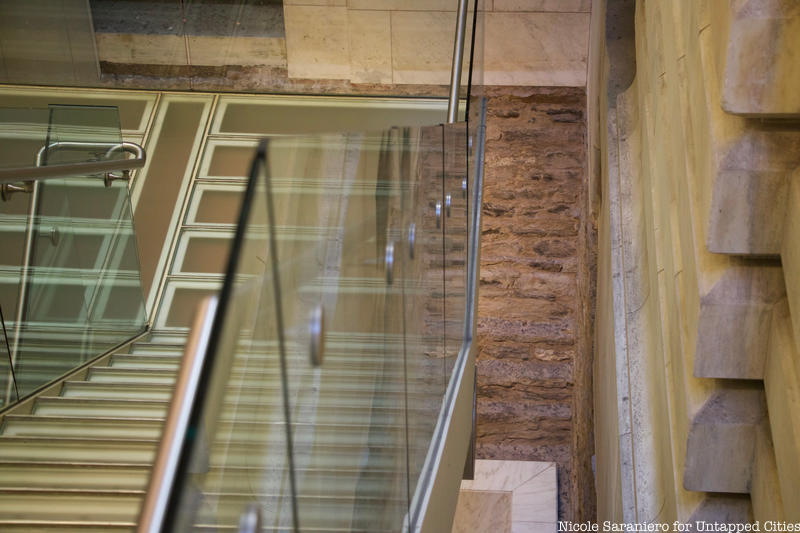2. The New York Public Library was Built on the Site of the Old Croton Reservoir

Getting fresh and clean water to New York City was a major challenge in the early 19th century as the city rapidly expanded. The solution to the city’s water needs was the Old Croton Aqueduct. Construction started on this water transportation system in 1837 and water first flowed through it in 1842. The aqueduct moved water from the Croton River in upper Westchester county down into Manhattan. The water was stored in a receiving reservoir which was located where the Great Lawn of Central Park is now, and was distributed from a reservoir at the current site of the Schwarzman building. That reservoir was known as the Croton Reservoir.
The Croton Reservoir held 20 million gallons of water within its walls which stood 50-feet tall and 25-feet wide. Edgar Allan Poe frequently walked atop the reservoir walls to enjoy the view they offered of the city. When it became obsolete in the 1890s, it was torn down to make way for the new library building. It took two years and some 500 workers to dismantle the reservoir. The cornerstone of the library was laid in 1902. The Old Croton Aqueduct would serve as a vital water supply for New York City for nearly a century until a new aqueduct was built which remains in service to this day. Inside the library, you can still see pieces of the reservoir walls if you look for the rough stone between the stairs on the lower levels of the South Court, near the Celeste Auditorium.





